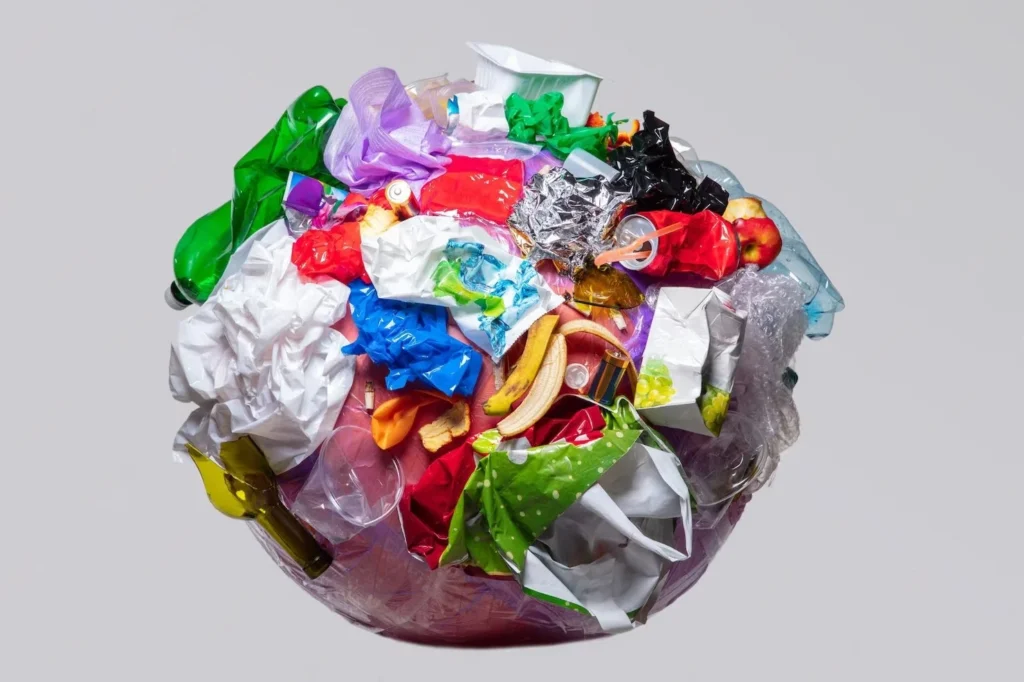Key Takeaways:
- Biodisintegration is a natural process that converts organic waste into beneficial products.
- Understanding the stages and benefits of biodisintegration can help in waste management.
- Utilizing biodisintegration can reduce landfill waste and support sustainable practices.
- Technological advancements and research are making biodisintegration more efficient.
- Implementation of biodisintegration processes can have significant environmental and economic benefits.
Biodisintegration involves breaking down organic waste into natural elements through biological processes. This eco-friendly method accelerates decomposition, turning waste into nutrient-rich soil, reducing landfill burden, and minimizing pollution. By harnessing microbial activity, biodisintegration supports sustainable waste management and promotes environmental health.
What Is Biodisintegration?
Biodisintegration refers to the natural process where organic materials break down and decompose into simpler substances. This phenomenon is crucial for environmental sustainability as it helps reduce waste and recycle nutrients into the ecosystem. Industries utilize flushability testing to determine how rapidly organic waste disintegrates, ensuring minimal environmental impact.
The term covers many processes, from the decomposition of leaves on forest floors to the breakdown of food waste in domestic settings. Effective bio disintegration is essential for maintaining soil health and reducing landfill waste, making it an integral part of sustainable waste management practices. Understanding how this process works becomes vital as more communities become environmentally conscious. This knowledge can empower individuals and organizations to adopt practices that enhance waste reduction efforts.
The Stages of Biodisintegration
Understanding the stages of biodisintegration can be enlightening. Initially, microorganisms such as bacteria and fungi begin to consume organic matter. This first stage is often called the ‘primary’ phase, where large waste particles are broken down into simpler compounds. These microorganisms significantly jump-start the decomposition process, transforming complex organic molecules into simpler, more manageable ones.
Primary Breakdown
During the primary breakdown, microorganisms secrete enzymes that degrade the complex molecules in organic waste. This results in smaller, more manageable particles that other organisms can further decompose. The transformation during this phase is critical as it sets the stage for more accelerated breakdown in the subsequent stages. These initial steps occur at the molecular level, making the original organic material unrecognizable and ready for further transformation.
Secondary Breakdown
The secondary breakdown stage involves the microorganisms consuming the simpler compounds produced in the primary phase. This results in the formation of stabilized organic material, often called humus, which is highly beneficial for soil fertility. This stage significantly enriches the soil, providing crucial nutrients that promote agricultural productivity. The process of humus formation also aids in the retention of soil moisture, which is necessary for plant development and lessens the requirement for regular watering.
Benefits of Biodisintegration
The environmental benefits of biodisintegration are manifold. One primary advantage is reducing landfill waste, which can help mitigate methane emissions, a potent greenhouse gas. This process also replenishes the soil with essential nutrients, promoting healthy plant growth. According to the EPA, effective waste management through biodisintegration can lead to sustainable agriculture and environmental conservation. Bringing organic matter back into the soil ensures a continuous cycle of nutrients, reducing dependency on chemical fertilizers.
Biodisintegration also aids in combating soil erosion and maintaining water retention within the soil. When organic matter breaks down, soil structure improves, enhancing its capacity to hold water and resist erosion. This benefits the environment and significantly impacts agricultural practices, increasing crop yields and preserving arable land. Healthy soil resulting from biodisintegration can support diverse plant life and ecosystems, fostering more extraordinary biodiversity and resilience against environmental changes.
Current Technological Advancements
Recent technological advancements have streamlined the disintegration process. Innovations such as enzymatic treatments and controlled composting facilities have enhanced the efficiency of breaking down organic waste. The Journal of Hazardous Materials released research demonstrating how important biotechnology is to increasing disintegration efficiency.
These technologies have opened new avenues for managing organic waste, reducing the time required for decomposition, and increasing the yield of valuable byproducts. Innovations like bioreactors and advanced microbial cultures are transforming the waste management landscape, making it more sustainable and cost-effective. Additionally, intelligent waste management systems equipped with sensors and data analytics optimize the conditions for biodisintegration, ensuring consistent and measurable outcomes.
Moreover, ongoing research focuses on developing biodegradable materials seamlessly integrating with natural biodisintegration processes. This advancement promises to reduce the environmental footprint of various industries, including packaging and textiles, by ensuring that products are designed for end-of-life biodegradability. Such technological advancements make biodisintegration a viable and attractive option for urban and rural waste management strategies.
How You Can Contribute
People can contribute significantly to the process of biodisintegration. Simple actions, such as composting kitchen waste and segregating organic from inorganic trash, can make a big difference. Home composting kits make it easy to turn kitchen scraps into valuable compost, even in small living spaces. Additionally, spreading awareness about the benefits of biodisintegration can help in collective environmental efforts.
By understanding how biodisintegration works and its benefits, everyone can contribute to a sustainable future. By making wise decisions and adopting sustainable habits, we can all help transform organic waste into valuable resources and preserve a healthy Earth for subsequent generations. Community awareness campaigns and educational programs can further amplify these efforts, fostering a culture of sustainability and responsibility towards the environment. Schools and local organizations can host workshops and seminars to educate the public on effective composting techniques and the broader impact of biodisintegration.
Additionally, supporting policies and initiatives that promote biodisintegration at the municipal level can drive more significant changes. Legislations encouraging businesses to adopt biodegradable packaging and responsibly manage waste can have far-reaching impacts. By voting for eco-friendly policies and leaders dedicated to sustainable development, citizens can influence systemic changes that align with ecological goals. Collective action, backed by individual responsibility, is critical to realizing the full potential of biodisintegration and ensuring a sustainable future for all.







